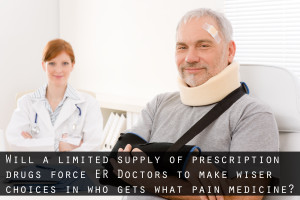Prescription Drug Abuse: Opioid Debate Focuses on Emergency Departments
There is little argument that America is in the midst of an opioid epidemic, but health officials will argue about how to solve the problem.
Scientific articles published recently in the same journal represent ideas that conflict. The Annals of Internal Medicine, a publication established in 1927 by the American College of Physicians, published two articles on the subject of restriction prescription in hospital emergency departments. The issue revolves around the current guidelines for how much pain medication should be kept in the pharmaceutical areas of emergency departments. One side of the debate says that the current regulation of a three-day supply is not enough for the average emergency department. The other side of the debate says the limited supply will force doctors to make wiser choices in who gets what pain medicine.
Prescription Drug Abuse
New York City made headlines earlier this year when city officials announced that the most powerful and common painkillers on the market today would be restricted in the city’s 11 public hospitals. The move was in response to the abuse of painkillers that has gripped the city. These painkillers include Vicodin, OxyContin and Percocet. Methadone and Fentanyl are no longer distributed in the public hospitals. Those in favor of the restrictions note that there has been a rapid increase in opioid analgesic consequences and that restricting the medications in question will help doctors provide safer care for their patients who are experiencing issues with pain.
Many Americans now have an expectation that a visit to the emergency room will result in acquiring pain medication. Some emergency department personnel agree that something has to be done about that perception, which is bolstered by doctors that could perhaps be less willing to doll out the drugs to patients in pain. Non-narcotic medications are now beginning to find their way into emergency departments, as are pain meds that are engineered to be less addictive.



